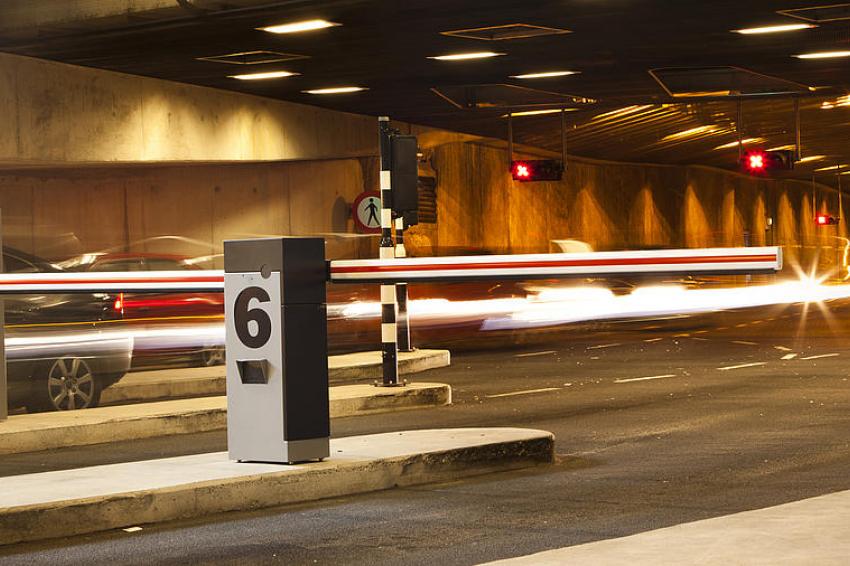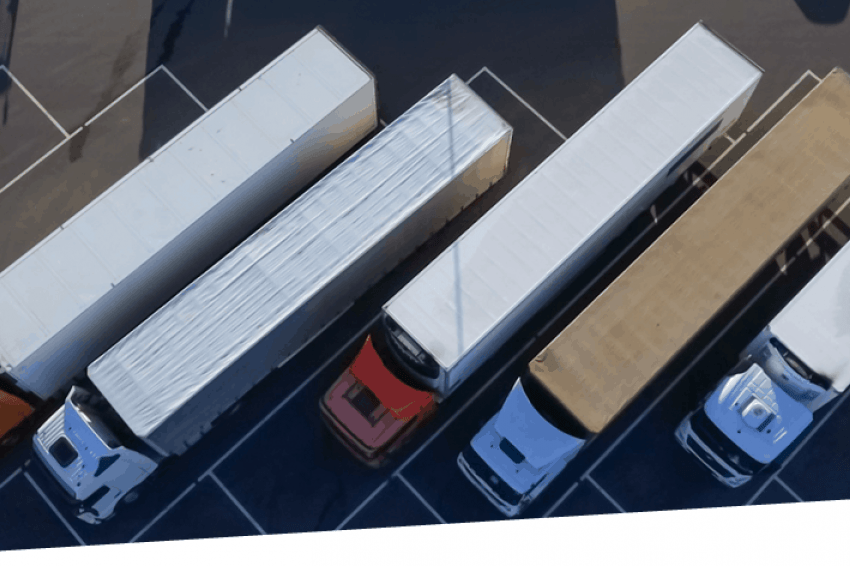Good For The Goods: A Deep-Dive into the Security of the Logistics Sector
Transport Logistics Security
We are now quite used to ordering something online, and receiving it one or two days later, maybe a week later if it comes from further away. But have you ever given a thought to all the security measures that are necessary for that to happen? The whole process would be a lot less reliable without the complete palette of today’s security technology being used along the route of our parcels. Let’s take a closer look what those are.
Leaving IT security and encryption aside, subjects that could easily fill a complete issue of GIT SECURITY on their own, we’re looking here at some of the elements that transport security encompasses: air freight and its supply chains, sea freight, sorting and subsequent transport to the customer. According to an estimate by the European Union, the theft of products moving in supply chains in Europe costs business in excess of 8.2 billion Euro each year [1]. How these goods are stolen varies from one country to the next, and the thieves also have their particular favorite items in view in each region.
When goods do get stolen, there are ‘hidden’ additional costs beyond just their material value. Time and effort – possibly by external resources – are required to investigate when, where and how the loss occurred. Then there is cost of the internal administration of writing those goods off, making a claim to the insurer and, hopefully, activating better security measures so that it doesn’t happen again. So to simply calculate in a percentage of operating costs from the beginning as ‘expected’ is naïve to say the least. Far better would be to invest that sum in security measures that prevent the theft from happening in the first place.
Sea Transport
If you’ve ever stood on the dockside of a busy port beside a container ship, you would find it hard to believe that such a massive vessel could be at risk. The number of ship hijackings peaked ten years ago, but 162 ships were still hijacked last year, and not just off Somalia, so the problem hasn’t gone away. Indeed, the techniques and equipment used to get on board are becoming more sophisticated. So, of course, are the countermeasures.
Without resorting to potentially lethal firearms, there are a number of solutions available to protect a ship against unwanted boarding. Perhaps the most ‘James Bond’-like device is the long-range acoustic generator from Genasys that emits a highly directional and ear-piercing noise, which causes approaching raiders to turn around. Bright lasers and powerful water cannon can have the same effect. There is no reason why these should not be used to protect infrastructure on land, by the way. Some ship owners have fitted a non-lethal electric fence or ‘stink bombs’ around the deck perimeter, or smeared the sides of their vessel with slippery goo. Others dangle thin wires beside the ship that become entangled in the propellers of approaching small craft.
Seeing what’s going on at night on a large vessel at sea would be almost impossible without infra-red video surveillance. Thermal cameras such as the M500 produced by Flir Systems especially for such a tough environment are already used by the military around the world and will deliver the images that pinpoint attackers without them even knowing it. And once on board, the security of doors to various parts of the ship is important, both for the crew as well as for any passengers on board. VingCard Marine has got this aspect covered with a range of stainless steel cylinder locks, door fittings and access control solutions that are built to withstand the corrosive salty environment.
Customs and Company Compounds
Wherever goods enter or leave either a sovereign country or a trade community (such as the EEC), customs officials at air, sea and road ports have an interest not only in raising significant amounts of money from incoming goods, but also in ensuring that these goods are secure while on their premises. Classic video surveillance has been in operation at such locations ever since it was invented, with image quality thankfully increasing greatly with each new generation of equipment to the HD pictures we enjoy today. Thanks also to increasingly intelligent video analytics, for example using the IP3000i series cameras from Bosch Security, these images now generate useful and valuable data, and thereby help to increase efficiency and reduce costs.
Simple license plate recognition algorithms take the tedium out of allowing vehicles in and out of secure compounds. A number of manufacturers have highly-developed intelligent solutions for this task, among them Milestone Systems with the Inex ALPR integration, from Axis Communications integrated with gates or barriers, or from Qognify using their Cayuga VMS. And to prevent simple copying of license plates to fool the cameras, DKT International can incorporate hidden features such as holograms and laser marks to verify the authenticity of the plates.
The mechanical barrier that lets vehicles in and out can take a number of forms: a simple pole, sliding or folding gates, retractable bollards or pop-up wedges. Each has its field of application, depending upon the level of security required. If necessary, a ‘sluice’ can be formed with two barriers that require the first to be closed before the second will open. This allows vehicles to be individually inspected and the occupants checked without any chance of them making a sudden exit. The Perimeter Protection Group have a full range of products to achieve this and also to cater for simpler requirements.
Bulk Road Transport
Opportunist theft can occur at any stage of the transport process if staff are careless. Open loading doors, unlocked or unattended loaded vehicles, and careless talk can all contribute to spontaneous crime and loss of goods. Far more worrying, however, is organized crime. Employees can be ‘groomed’ or blackmailed over a period of time to gain intelligence or provide information as to which transport company is transporting high-value or branded products. In particular low-paid staff may welcome the opportunity to earn some pocket money by providing information, directly stealing freight or by providing access for criminals to otherwise secure premises.
Once a vehicle leaves the security of the goods yard and goes out on the open road, its movements can easily be tracked and reported using GPS and GSM equipment on board. While it is moving, a truck is highly unlikely to be ‘attacked’ and goods or the complete truck with its trailer stolen. When it stops, however, it is at much higher risk. GX Solutions offer a trailer monitoring service that not only provides environmental information but also door opening detection. CargoGuard have developed sensors and monitors, remotely-controlled locking and deterrence devices and a sophisticated monitoring system to defeat even the most determined thieves. Bosch Service Solutions in conjunction with the SAP Vehicles Network offer pre-booked secure parking areas that solve both the security problem and also the shortage of overnight truck spaces.
A kingpin lock is a first line of defense against trailer theft. An added level of security – and one that helps compliance with TAPA recommendations, see below - is given by a trailer immobilizer, such as that provided by Wabco. This interacts with the trailer’s own braking system and doesn’t allow it to move until the correct PIN has been entered on a concealed keypad. Any interference with the system will also raise an alarm.
The Sorting Center
Access control for personnel for any compound where high-value today can include biometrics that identify unique physical aspects of the person. Gone are the days of passing cards back over barriers to get someone else in or using stolen identity tags. Retina scans, fingerprint or whole hand scans are now the leading edge of human identification. And the cost of such equipment has become much more affordable than before as it becomes widespread. Johnson Controls’ biometric access control solution will ensure that exclusively authorized personnel gain access to the secure areas that you define. The readers developed by Nedap also address the issue of dirty or wounded fingers by employing multispectral technology.
The modern sorting center is only economically viable if efficiency is high and costs are kept well within budget. Contemporary handling systems provide the potential efficiency, but human resources are also needed. Temporary employees are frequently not sufficiently trained, and this increases the risk of theft and damage due to poor handling skills. So physically tracking parcels as they make their way from ‘input’ to ‘output’ can be achieved by employing the Qognify Logistics Solution. This tracks shipments using intelligent video analysis interfaced with the warehouse management system to provide Business Video Intelligence. It utilizes event and video data to build the complete route of goods, even when they are being moved manually and not being scanned electronically.
The ‘Last Mile’
With our parcel safely loaded on the van that will bring it to its final destination, the problem of theft is by no means over. Constant training and reminding of the responsibility that drivers have is fundamental to trouble-free final delivery. Additional technical methods are available to secure delivery vehicles, but these are only as effective as the person who is using them.
If the receiving customer is not there when the delivery van arrives, perhaps the safest option is to bring the parcel to a secure pick-up center instead. In Germany, DHL/Post operate the ‘Packstation’ and ‘Paketbox’ systems where the customer uses a card to authorize the opening of the compartment containing their parcel. Manufactured in Sweden, the TrueMobile solution from Assa Abloy Logistic Security Solutions provides a similar facility. Here, virtual ‘keys’ to secure boxes are distributed to the mobile devices of the deliverer and the collector.
Train Off The Rails
Every new employee is shown basically how to do the job they’re expected to perform during their first few days. Security personnel, however, have had to absorb a lot more knowledge over recent years than was ever the case, with them now being expected to operate multiple increasingly complex systems. Training on these and other, more human aspects of the job must of course be continuously carried out. Max Security can provide far-reaching security training that will ensure your staff are up-to-date on the latest threats and methods.
Security staff may even be called upon to investigate losses while understanding the intricacies of the transport/logistics industry, be willing to roll up their sleeves and carry out other transport-related duties such as pallet counting, refueling vehicles, and maybe assist with stock audits. So anything that can lighten their everyday load is welcome.
Assimilating the information coming in from diverse security and environmental systems can quickly overload the human brain. Making sense of it all and assisting in potentially stressful security alert situations is the purpose of the Sky Walker Open Integration Platform from Entelec. This control room software allows the many diverse systems – CCTV, fire alarm, environment control, intrusion detectors etc. – to be controlled and monitored via just one logical human interface and provides physical security information management (PSIM). The pre-defined procedure to be followed if an alarm is raised leads the decision-making process to ensure a sensible, safe and timely response. Staff training becomes much simpler, and operator efficiency is optimized.
Criminals and terrorists are sure to find methods to circumvent the detection strategies that we apply, but putting as many obstacles in their way as possible is the continuous duty of the security industry. So frequent collaboration between the Security and Human Resources departments for staff and sub-contractor vetting, regular reviews of security strategies, the unannounced implementation of higher security measures and more advanced technology will, together, all help to reduce losses in the logistics chain.
The True Picture
The Transported Asset Protection Association (TAPA) was formed to address the international issue of supply chain security. It looks intensely at the processes along the route of goods from manufacturer to customer and every aspect of ensuring that those goods arrive as ordered and supplied. It collaborates with national and regional organizations involved in the individual elements of this transport, and also with governmental authorities (LEAs). It also collates develops international security standards and publishes statistics that show the full extent of the problem. While at first glance some countries appear to suffer more theft then others, as one country president recently said, “Think of this, if we didn’t do testing, instead of testing over 40 million people, if we did half the testing we would have half the cases.” Well, not collecting or simply ignoring theft statistics also conveniently denies the true scale of the problem. The Incident Information Service of TAPA was initiated to avoid exactly this attitude and to provide transparent data on theft during transport within EMEA.
Even those companies that conform to the TAPA convention security standards still suffer losses through theft or compliance failures, however, when employees do not comply with policies or procedures. So asset visibility and tracking provides a second line of defense to know that goods will arrive complete. RFID and/or GPS technology is typically employed for this. Sophisticated services are now available to track items around the globe and to follow their international progress. Deviations from expected routes or timetables will raise an immediate alert.
Strangely, terrorism sometimes actually puts items into the supply chain rather than taking them out. Therefore electronic screening and security checks are necessary to reduce the risks of explosives or chemicals being loaded onto vehicles, ships or aircraft. Here again, if barcode scanning and/or RFID tracking is being used at the loading point and throughout the transport chain, then an item that does not comply with what the data processing system is expecting should be immediately rejected and investigated.
Invest to Convince
There is an old saying that “security is a cost that cannot be retrieved.” Well the more discerning customers will look nowadays for freight companies that don’t agree with that and that have invested in the latest security services and freight protection. Investing in security in fact becomes a selling tool to win further business.
[1] “EC Security Guidance for the European Commercial Road Freight Transport Sector”, The European Union. ISBN: 978-92-79-77768-4 / doi: 10.2832/97074
Assa Abloy
www.assaabloylogistics.com
Axis Communications
www.axis.com
Bosch Security
www.boschsecurity.com
Bosch Service Solutions
www.boschservicesolutions.com
CargoGuard
www.cargoguard.com
DKT International
www.dkt-international.com
Entelec
www.entelec.eu
Genasys
www.genasys.com
GX Solutions
www.gxsolutions.eu
Johnson Controls
www.johnsoncontrols.com
Max Security
www.max-security.com
Milestone Systems
www.milestonesys.com
Nedap Solutions
www.nedapsecurity.com
Perimeter Protection Group
www.perimeterprotection.net
Qognify
www.qognify.com
Transported Asset
Protection Association (TAPA)
www.tapa-global.org
Wabco
www.wabco-customercentre.com
Contact
Qognify
Tallis House, 2 Tallis Street
EC4Y 0HB London
United Kingdom
+44 1489 771 200
+44 1489 771 665
Johnson Controls
Am Schimmersfeld 5-7
40880 Ratingen
+49 21 02 71 41 0
+49 21 02 71 41 100
ASSA ABLOY Opening Solutions EMEIA
Dukes Street
Woking
Surrey GU21 5BH, United Kingdom
+49 30 8106 2970
+ 49 8106 1970
*Perimeter Protection Germany GmbH
Johann-Reineke-Straße 6-10
33154 Salzkotten
Germany
+49 5258 500 70
+49 (0) 5258 4164













